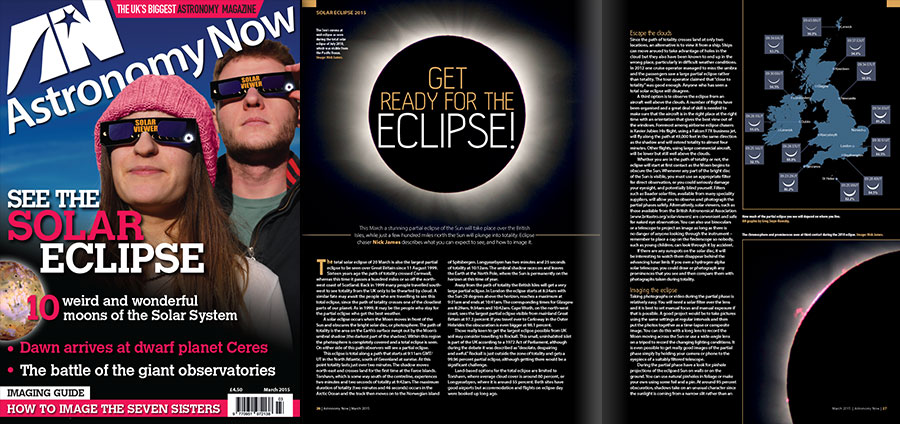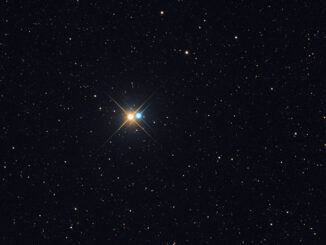
On the morning of Friday 20 March the Sun will move into eclipse while people in the UK are heading to work or school. Although the eclipse will only be total from the Faroe Islands and Svalbard in the Arctic Ocean, residents of Europe will be able to see a pretty good partial solar eclipse.
During a partial eclipse it will still be daylight, and while you are on your way to work or school you probably will not notice any difference in the lighting conditions. However, if you want to see the eclipse in progress, there are ways to observe it safely.
Remember, it is very dangerous to look directly at the Sun with your eyes or through a telescope or binoculars – should you do so, you will risk permanent blindness. NEVER LOOK AT THE SUN WITHOUT DEDICATED SOLAR VIEWING EQUIPMENT.
With that warning in mind, what are the safest ways to view the solar eclipse?
Pinhole camera
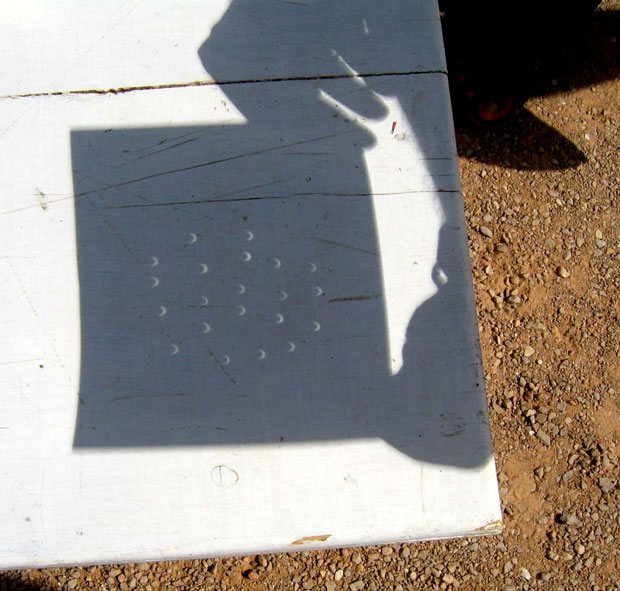
This method carries zero risk, because it does not require you to look at the Sun at all. To create a pinhole camera, you can use anything that contains small holes, from a piece of card with a pinhole punched in it, to a colander or even a shower head! The small gaps between the leaves on a tree can also act as a multitude of pinhole cameras, although this method might not be much help for this particular eclipse, given that at the start of spring most of the trees will still be bare.
The pinholes project an image of the Sun onto the ground, or you can utilise some kind of screen such as a piece of card, perhaps the inside of a cereal packet. The projected image will show the crescent of the Sun as the Moon gobbles up its disc. Aside from the safety benefits that this method provides, it is also excellent for showing the eclipse to an audience of people.
Telescopic projection
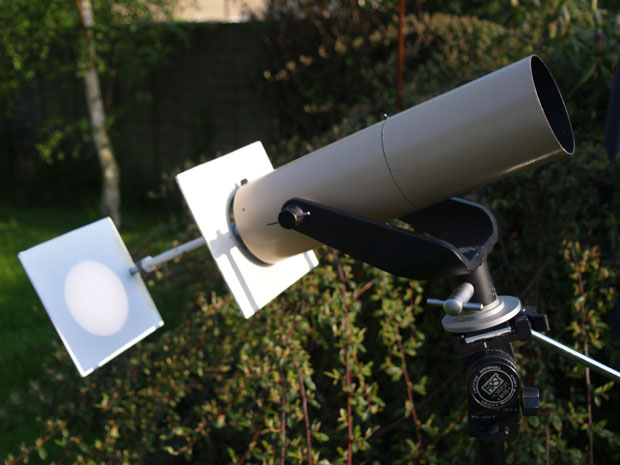
Another form of projection, but this time using the telescope (or binocular) lens rather than a pinhole, which results in a more defined image. You will need two large pieces of card. In one of them cut a hole wide enough for you to fit the telescope tube through. This will act as a mask, to shield the other piece of card from the glare of the Sun. Then hold this second piece of card away from the telescope eyepiece until you find focus. You will notice however that the image of the eclipse is upside own, but this is a great way to display the eclipse to a large number of people at the same time.
A couple of safety tips, however. Don’t use a cheap plastic telescope for this – the heat of the Sun will melt and crack the tube and lens. Always keep the cap on the finderscope, so that no one (particularly children) can look through the finderscope and blind themselves. Similarly, make sure to put the cap on the telescope when it is not in use, and do not leave it unattended, so that no one can look through accidentally. NEVER look at the Sun directly through the telescope eyepiece or the finderscope or you will damage your eyes. You should be able to point the telescope in the right direction just by lining up its shadow on the ground and then making small adjustments while looking for its projected image on the card.
Eclipse glasses

A reasonably safe way to view the eclipse directly is to use solar eclipse glasses. These are glasses that use a special film called Mylar that acts as a solar filter, blocking out the harmful light of the Sun and letting through just enough light for you to see the eclipse in safety. However, be careful that there are no scratches or holes in the glasses – even a tiny pinhole can let through enough sunlight to permanently damage your eyes. So always check them before use, especially if they are an old pair that you have had stored away for a while. If in doubt, take the safety first option and buy a new pair of Mylar glasses before the eclipse.
Do not use sunglasses, or welder’s goggles. Although these may seem to block some of the Sun’s light, they will let through the Sun’s harmful ultraviolet light, which is more than enough to seriously damage your eyes. Do not attempt to look at the eclipse through squinted eyes or through thin clouds – you will also do your eyes harm.
Telescope filters
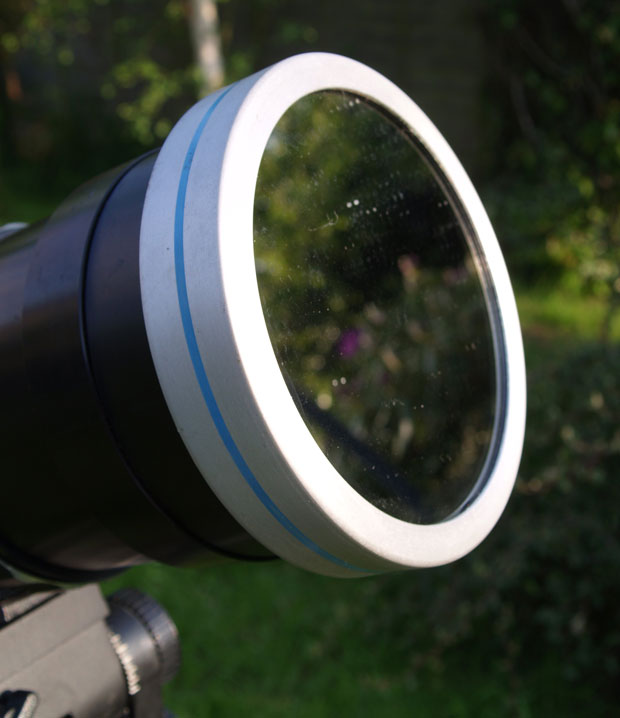
You can purchase solar filters to cover the aperture of your telescope and allow you to view the Sun safely. These filters can come in the form of specially built caps that you can attach to your telescope, or sheets of Mylar film from which you can build a DIY solar filter. But, as with the glasses, you must take caution. Any scratches or holes in the filter will lead to dangerous amounts of sunlight passing through and damaging your eyes. Only use solar filters that cover the aperture end of your telescope (the end pointing at the Sun). Eyepiece filters, on the other hand, are very dangerous. The sunlight is focused at the eyepiece, so it can become very hot and cause the eyepiece to crack. If you were looking through the telescope when it cracked, you would get an eyeful of focused sunlight, permanently damaging your eyesight.
Solar telescopes
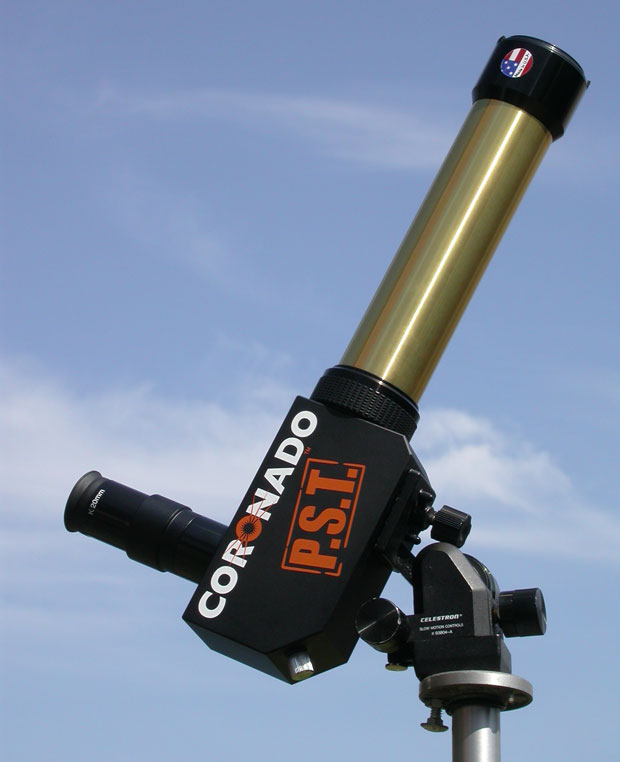
You can purchase dedicated solar telescopes that observe the Sun at a single wavelength of light, such as hydrogen-alpha, thereby blocking out all the harmful light. The solar filter is built into the telescope, so there is no risk of it becoming damaged unless you open up the telescope to tamper with it. Solar telescopes are made by manufacturers such as Coronado and Lunt, but the downside is that they are expensive, costing from anywhere between £700 for the popular Coronado Personal Solar Telescope (PST) to several thousands of pounds for the bigger and more sophisticated models. On the plus side, you can use them to observe sunspots and prominences on the Sun on a day-to-day basis, so if you catch the solar observing bug while viewing this eclipse, then perhaps a solar telescope will prove a sound investment!
Inside the magazine
In the March 2015 issue of Astronomy Now, on sale now, veteran eclipse chaser Nick James describes what you can expect to see during March’s solar eclipse. Get your copy in the shops or order online.
Never miss an issue by subscribing to the UK’s biggest astronomy magazine. Also available for iPad/iPhone and Android devices.

